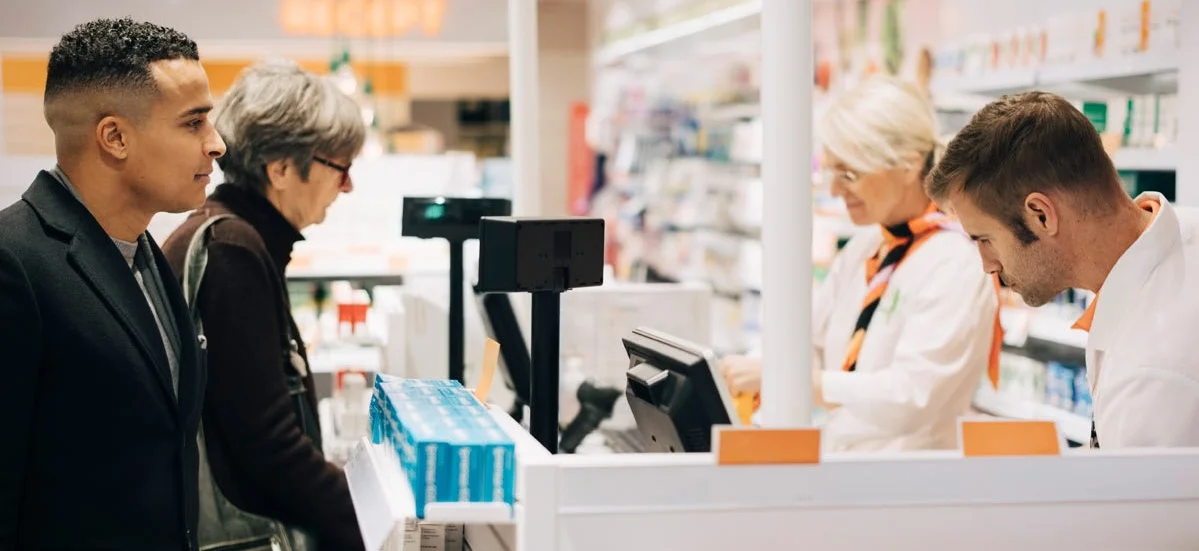Why Amazon Will Buy A Retail Pharmacy Chain In 2019
/Jeff Bezos is just like your local pharmacist: everyone thinks he’s in retail, but he actually earns his money by providing a service.
Amazon bought PillPack, an internet pharmacy start-up, in June of last year, leading to speculation that the online retailer will soon start selling prescription drugs to cash-paying patients. And there’s no shortage of discussion (fear?) about the potential for the behemoth to cause disruption in the pharmacy sector by providing online ordering and home-delivery of prescription medications.
But Jeff Bezos won’t settle for disrupting just the portion of the market that wants online ordering and home delivery of their meds. Amazon’s modus operandi is to disrupt entire marketplaces, not just narrow market segments. Sure, mail-order prescription volume has been on the rise for years, and presents an obvious opportunity for Amazon. However, according to estimates by Morgan-Stanley, Americans will spend more than $465 billion on prescription drugs in 2019. And more than 75% of that money will change hands across a counter… at a bricks-and-mortar pharmacy.
Let’s do a little back-of the envelope math: In the US in 2017 the average per-capita spend on Amazon purchases was $596/person, compared to an average retail pharmacy spend per-capita of $1,087/person. So the average American is almost TWICE AS VALUABLE to their local retail pharmacist as they are to Jeff Bezos.
But that’s the average of every man, woman, and child in the US. According to Fortune magazine the average Amazon Prime customer spent just over $1,300 last year. Compare that to the “prime” customer of a retail pharmacy: a patient with a chronic medical condition such as diabetes, where annual retail pharmacy spend in the US tops $4,600/year per patient. Sure, you can probably find that much money in Jeff Bezos’ couch cushions… but you just know he’s laying awake at night trying to figure out how Amazon can capture that revenue stream.
But the fact that bricks-and-mortar pharmacies are the location for the bulk of prescription sales in the US is not the reason that Amazon will want to snap up a retail pharmacy chain. At least not the only reason. Beyond sales volume, a move into retail pharmacy makes a lot of strategic sense for Amazon. What would Amazon get by purchasing a pharmacy chain?
Access to existing, high-value customer relationships: Retail pharmacists are always at or near the the top of the most trusted professions in the US (Gallup) and a majority of Americans state they value the relationship they have with their local pharmacy (Consumer Reports). Having a friendly person as the “user interface” for prescription drug purchases will remain important for a great many people in the near- and mid-term. Acquiring PillPack is dipping a toe-in-the water; acquiring a retail chain lets Amazon jump right in the deep end.
Ability to convert retail customers to mail-order at point of service: Buying a retail chain - and their installed base of customers - provides Amazon a shorter and easier path to online conversion. The same friendly pharmacist who fills your initial prescription can shepherd you directly to automatic online refills. In doing so, they will free themselves up to provide better service and more valuable counselling to you and other patients. Instead of being stuck in the back filling 300 RXs a day, perhaps busy Amazon pharmacists will fill 100 RXs on-site… with the other 200 entered into the system by a clerk, filled offsite, and shipped to the patient for next day delivery. (With obvious profit-driving implications.)
Ability to fill one-time and first-time prescriptions: While the majority of mail-order prescriptions comprise refills for chronic conditions, a significant portion of retail pharmacy sales volume is made up of one-time prescriptions for acute conditions (eg. infections, cough/cold, etc) or the initial prescription for a chronic condition that will be treated over an extended period of time. (eg hypertension, diabetes, depression.) In both cases the strong desire of patients to get certain medicines in-hand today - and receive needed counseling - will be hard for mail-order pharmacies to accommodate. This is especially true during the start of chronic treatment, where counseling, titration, switching, concomitant meds, comorbid conditions, side-effects, and potential drug interactions really benefit from the presence of a local pharmacist vs an online system. Add to that any number of Scheduled products, refrigerated formulations, etc that may complicate or preclude mail-order shipping. A local presence is necessary offering if you really want to disrupt and own the retail pharmacy market.
Payer, reimbursement, supply-chain, legal expertise, and infrastructure: Amazon is going to enter the pharmacy marketplace; the only question is “how?” No doubt the Amazon folks have conducted a classic “build vs buy” analysis. After about ten minutes of considering all the healthcare-specific barriers to entering the pharmacy market (legal, regulatory, compliance, logistics, privacy, etc… across 50 different states) Amazon would surely see the benefits of acquiring and absorbing a going concern with nationwide presence rather than trying to start from scratch online.
A locus for providing additional healthcare services: Retail pharmacies are well located to deliver healthcare services due to convenience and accessibility. (~80% of the US population lives within 5mi of a retail pharmacy.) With continued cost pressures and healthcare access issues, a community pharmacy is ideally positioned to accomodate immunizations, treatment for minor illnesses and injuries, travel health, skin conditions, women’s services, preventive health screenings, chronic-condition monitoring, and general wellness care. Providing these services - on-site vs online - is a lucrative opportunity.
Access to millions of patient-years of longitudinal data: As a start-up, PillPack will help Amazon begin to generate patient data during the course of operations. However, in business today, data is the coin of the realm. And no one does a better job of collecting and analyzing data, making it actionable, and turning it into sales. Amazon data scientists would crawl across broken glass to get their hands on data from, say Walgreens who, according to their website, conducts business with 8 million customers each day and fills more than 1.1 billion prescriptions annually.
A predictable, recession-proof revenue stream: Amazon has been quite effective at garnering share of the consumer-products retail market. However, sales volume in consumer goods is notoriously volatile based on economic factors and the shifting winds of consumer sentiment. Prescription medication sales volume, on the other hand, is far more predictable over time. While the number of people buying the latest electronic gear and kitchen gadgets may wax and wane based on the latest economic conditions, chronic-care patients essentially represent a guaranteed annuity stream as they will forgo the purchase of a new 5-in-1 slow cooker in favor of their insulin or seizure medication if money is tight next month.
Multiple layers of margin from which to extract profit: Jeff Bezos has famously admonished the marketplace: “Your margin is my opportunity.” Currently there are many parties making lots of money in the prescription drug business: pharma companies, pharmacy retailers, wholesalers, distributors, PBMs, managed care organizations, shipping companies, packaging suppliers, service providers, ad agencies, media companies, etc. With its huge scale, ever-widening scope, and unprecedented ability to disintermediate whatever market it enters, Amazon is uniquely situated to garner huge profits in a market where the current, traditional stakeholders are struggling with pricing pressure and margin squeeze. Whatever your organization’s roll in the pharmaceutical industry… your margin is Amazon’s opportunity.
Of course Amazon is best known for coming out of nowhere in the mid-90s to disrupt the way books are sold… and ultimately the way just about anything and everything is sold. It’s easy to see how we may have been tricked into believing that Amazon is simply an “online retailer” and it’s easy to forgive the fact that the idea of Amazon purchasing a bricks-and-mortar pharmacy chain may not immediately resonate strategically.
However, keep in mind that - in a very real sense - Amazon is not in the “online retail” business. Rather, Amazon makes money by providing a service. And you have to believe they will quite happily - and quite profitably - provide that service through any channel, at any time, and in any location, where there are large numbers of customers clamoring for it.
What is the service that you’re actually paying Jeff Bezos for when you buy something from Amazon? Ready access to whatever you need, delivered when and where you need it, at a fair and transparent price. Doesn’t that sound like exactly what consumers of prescription medications have long been clamoring for?


